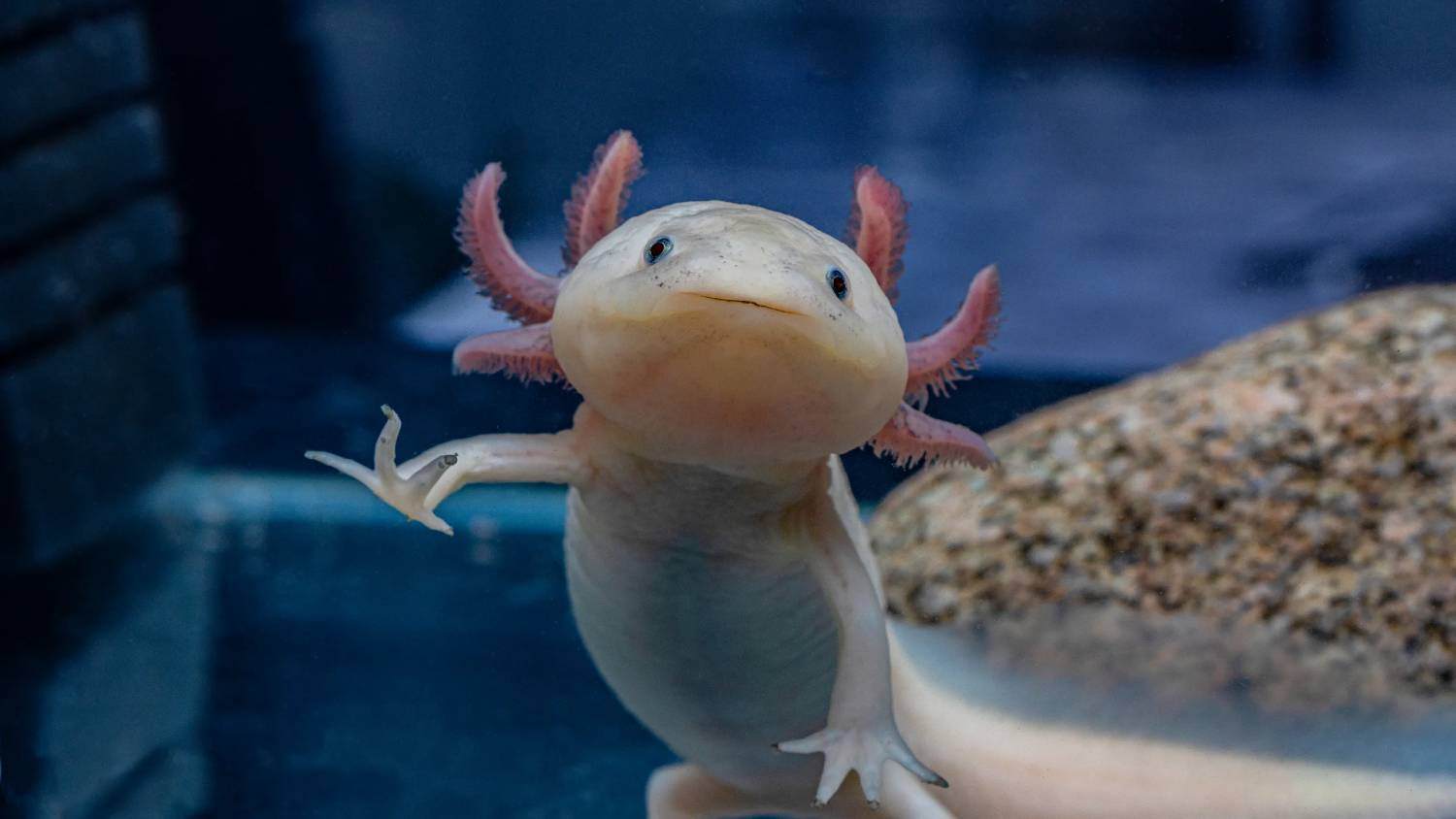Axolotl Characteristics, Habitat & Facts | What is an Axolotl?

Discover the unique axolotl, its regenerative abilities, ecological importance, and conservation efforts at Interactive Aquarium Cancún. Learn how to protect this Mexican biodiversity treasure.
The axolotl, scientifically known as Ambystoma mexicanum, is an extraordinary amphibian native to the canals of Xochimilco in Mexico City. Its appearance is unmistakable: with its smiling face, feather-like external gills, and unique ability to regenerate parts of its body, the axolotl has become a symbol of Mexican biodiversity. This species, also called the “water monster” by the ancient Aztecs, has captured the attention not only of scientists but also of the general public due to its ecological significance and its role in advanced scientific studies.
At Interactive Aquarium Cancún, the axolotl exhibit allows visitors to get up close to this fascinating species, understand how it contributes to its habitat’s balance, and learn about the threats it faces. It’s an opportunity to reflect on the importance of protecting biodiversity and preserving this unique natural heritage.
The ecological role of the axolotl: what role does it play in its ecosystem?
The axolotl is more than a peculiar amphibian; in its natural environment, it plays an essential role in the ecological stability of the Xochimilco canals. Acting as a predator, it controls the populations of small fish, insects, and other invertebrates, preventing their uncontrolled proliferation and helping maintain ecosystem balance. At the same time, the axolotl becomes food for other species in the food chain, highlighting its fundamental role in the ecosystem’s energy flow.
These aspects make it a key component of its natural habitat, a fact that you can learn more about at Interactive Aquarium Cancún. Here, visitors come to understand how each axolotl is a silent guardian of the Xochimilco ecosystem, whose decline would affect the entire region's biodiversity balance.
-1.jpg?width=1600&height=1067&name=Ajolote%20nadando%20(1)-1.jpg)
The incredible regenerative ability of the axolotl
One of the most amazing aspects of the axolotl is its ability to regenerate limbs, internal organs, and even parts of its brain. This unique capability has positioned the axolotl as a "living laboratory" for scientists who seek to uncover the molecular mechanisms that enable this regeneration. Understanding how axolotls achieve this feat could open doors in human regenerative medicine, with potential applications in spinal cord injury repair, degenerative diseases, and much more.
Interactive Aquarium Cancún offers an in-depth look at how this natural “superpower” is not only fascinating but also crucial in cutting-edge research. The axolotl exhibit invites visitors to explore how nature inspires us to find innovative solutions to improve human health and emphasizes the importance of conserving this unique species.
The axolotl and conservation: why is it endangered?
Despite its scientific relevance and ecological role, the axolotl faces multiple threats that have placed it in critical danger of extinction. The pollution of Xochimilco's canals, habitat destruction, and the introduction of invasive species have drastically reduced wild axolotl populations. The importance of its conservation is twofold: to preserve Mexico’s rich biodiversity and to continue advancing high-impact scientific research.
In our exhibit at Interactive Aquarium Cancún, not only are the efforts to protect this species showcased, but visitors are also educated on how they can contribute to its conservation. Captive breeding programs and habitat restoration are examples of how strategies are being implemented to save the axolotl and ensure it continues to play its role in the Mexican ecosystem.
The axolotl at Interactive Aquarium Cancún: a learning and conservation experience
Interactive Aquarium Cancún’s axolotl exhibit is a unique educational experience, ideal for those who want to explore this fascinating amphibian’s life and characteristics up close. Visitors will learn about its biology, the cultural importance of the axolotl in Mexico, and the conservation initiatives aiming to protect it. Each visit is an opportunity to discover the beauty of this species and understand how we can all contribute to its preservation.
The Axolotl as a Symbol of Hope and Biodiversity
The axolotl is not just a rare amphibian; it is a symbol of Mexico's biodiversity and an invaluable source of scientific knowledge. By protecting this species, we not only preserve a natural treasure but also open new opportunities for scientific research and medical applications. At Interactive Aquarium Cancún, we invite you to join our conservation mission and discover the inspiring story of the axolotl up close.


-1.jpg?width=352&name=Ajolote%20nadando%20(1)-1.jpg)

